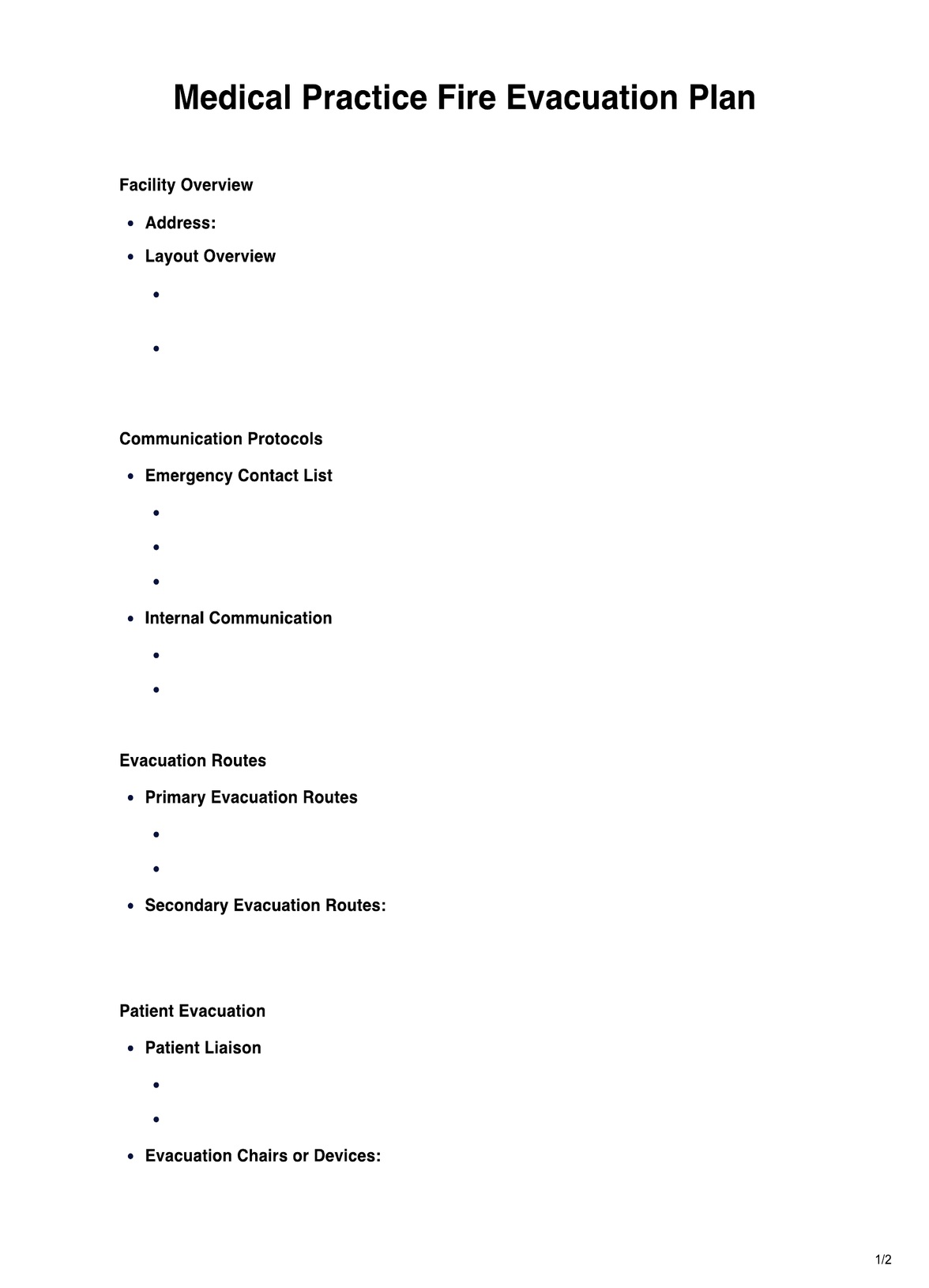Creating a template is easy. Input your facility details, customize evacuation routes, and establish communication protocols. It's a seamless process for comprehensive emergency preparedness.

Fire Evacuation
Download our comprehensive Fire Evacuation Template PDF for a strategic and accessible plan, prioritizing safety in any emergency.
Fire Evacuation Template
Commonly asked questions
Fire Evacuation Templates are used during routine preparedness, new occupancies, facility changes, and emergency response training. They are crucial when a structured and coordinated response to a fire emergency is required.
The templates serve as actionable guides during fire emergencies. Practitioners follow the customized plan, directing occupants to safety, coordinating with emergency services, and ensuring a well-coordinated response. Regular drills and updates keep the templates effective and current.
EHR and practice management software
Get started for free
*No credit card required
Free
$0/usd
Unlimited clients
Telehealth
1GB of storage
Client portal text
Automated billing and online payments











